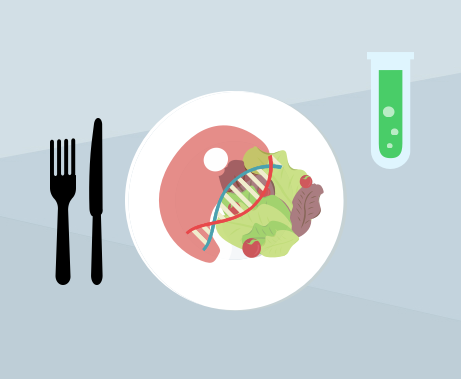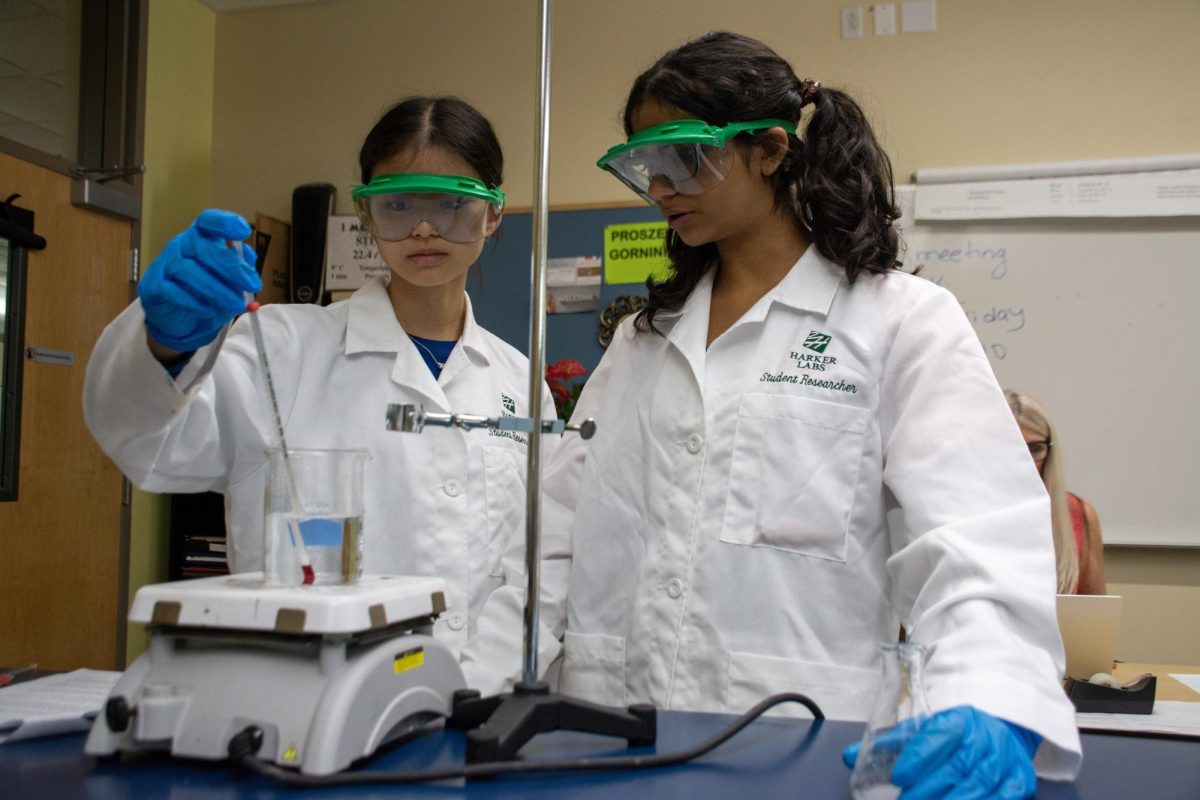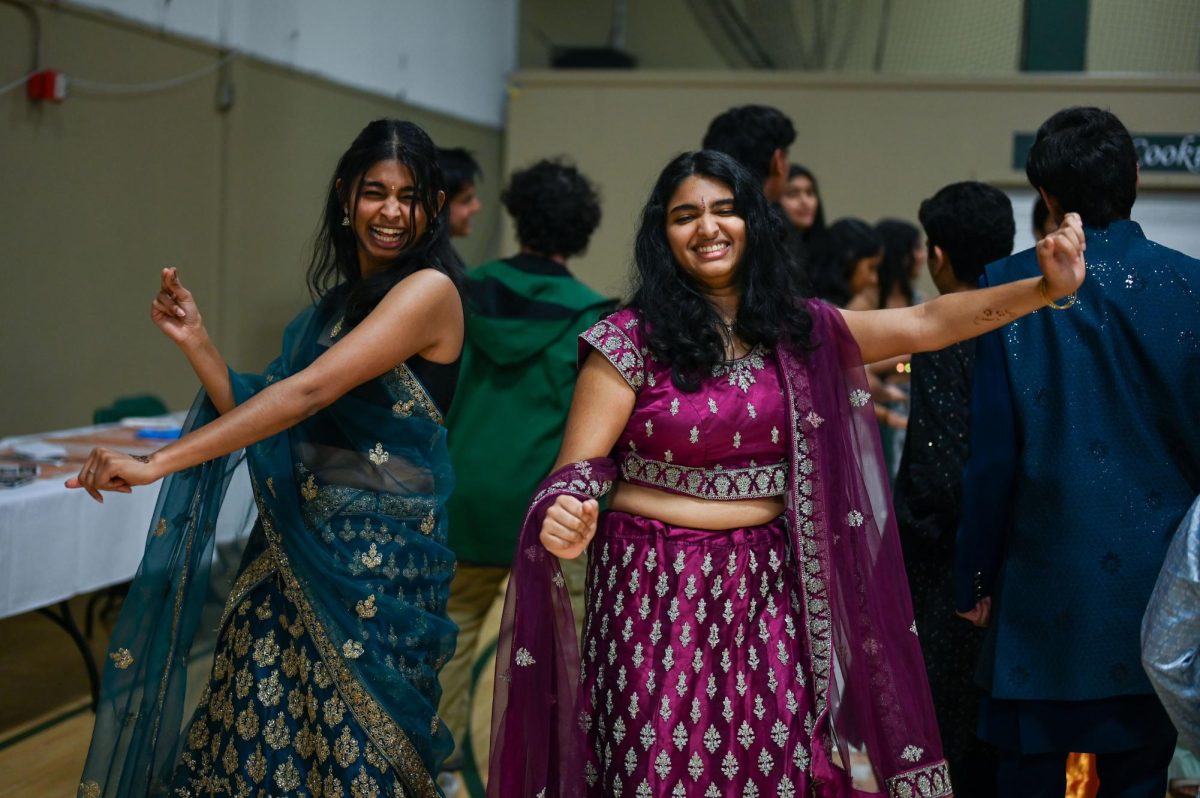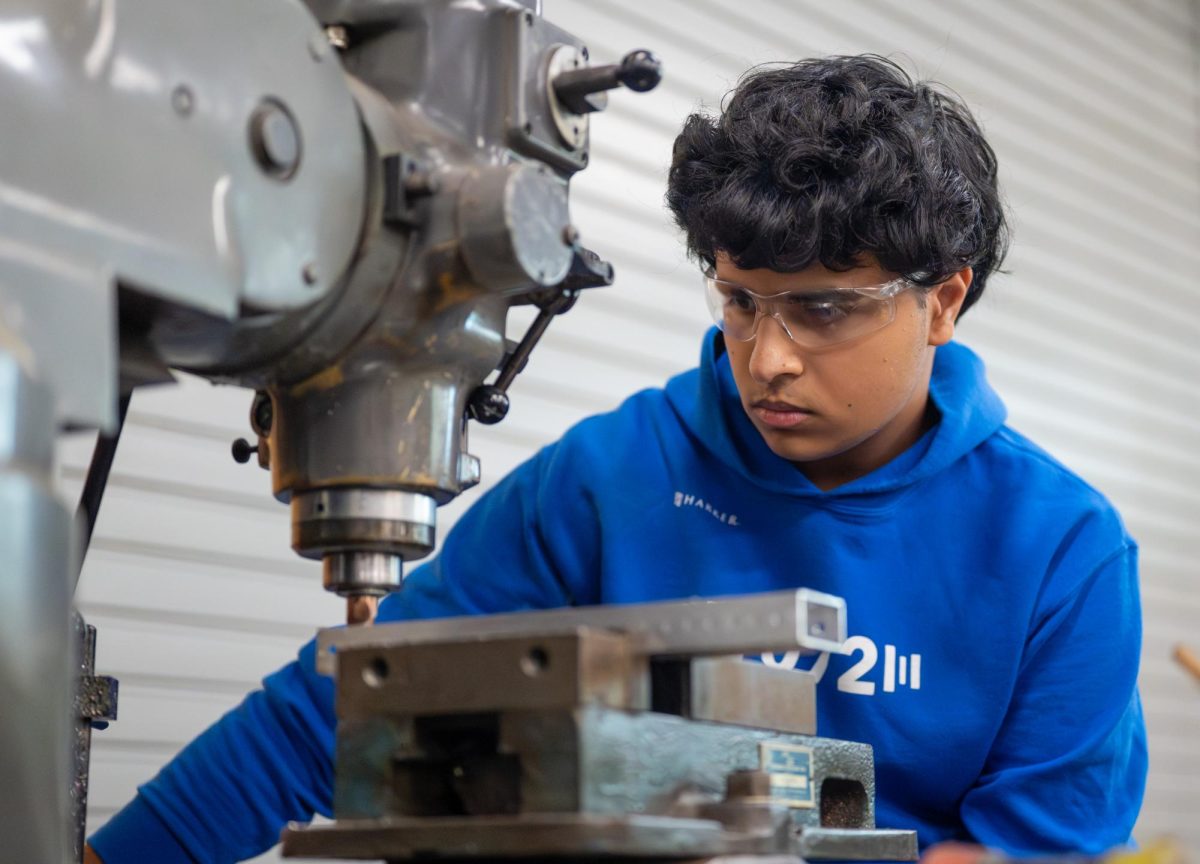Going against the grain: The benefits of accepting alternatives to traditional methods of food production

Green Team’s first trial run of Meatless Mondays, a policy that restricted the meat options offered during lunch for one school day of the week, was instituted on Jan. 30. The kitchen staff served grilled cheese sandwiches and veggie tenders as the main vegetarian dishes that day.
February 27, 2017
Since Green Team’s announcement of a trial run of Meatless Mondays, a program which limits meat options from the lunch menu in exchange for a larger variety of vegetarian dishes, a sizable population of students have taken to expressing their disappointment with the change with food on campus in a variety of ways.
Even though Meatless Mondays impacts only “one out of a student’s 21 weekly meals” and is “beneficial for the environment,” two of the policy’s advantages representatives of the club reminded the student body of at a recent school meeting, their report was still largely met at its conclusion with audible groans and frowns of discontent.
Despite the public backlash against this new lunch system, Meatless Mondays is only one of a large number of environmentally conscious dietary alternatives, many of which have grown in popularity over the years as individuals have begun to seek alternatives to traditional types of food for consumption.
Widely-accepted sources of protein include tofu, beans, quinoa and a variety of other plant-based products. Nutritional substitutions also include lab-grown meat, the creation of which involves utilizing muscle tissue harvested from animals, separating the fibers into cells and placing them into a culture to allow them to divide on their own.
A less popular vegetarian meat alternative comes in the form of insects. Known as entomophagy, the practice of using insects as sustenance is more popular in Eastern cultures than in the Western world; however, many countries today consider insects a viable source of protein for individuals who get their share of the dietary component from vegetarian food options.
While the public has been less than receptive to some of these alternatives, the development of genetically-modified organisms, or GMOs, has arguably sparked far more debate over its ethicality. An industry based on the genetic alteration of plants’ DNA to change crops’ growth cycles, taste and size, GMO production has garnered a fair share of criticism for its popularizing of the consumption of modified substances, which some see as abnormal and unnatural.
In contrast to the views of such individuals, the majority of the scientific community agrees that GMOs pose no health threats to people who consume them. Instead, they argue that GMOs have a variety of benefits, including pest resistance, herbicide tolerance and increased nutritional value.
A significant portion of the public’s opposition to GMOs stems from their reluctance to comprehend the science behind the food alternative. Given that the procedure of creating GMOs is more complicated than most methods of food production, it should not be surprising that consumers would be resistant to trying something they themselves don’t know for sure is harmless.
However, people’s refusal to accept GMOs as an alternative method of food production has not stopped GMO products from making their way into supermarkets— and more generally, into the American diet as a whole. Given that GMO crops allow agricultural workers to produce more affordable food through the use of less resources—such as land, water and pesticides—goods made using GMOs are comparatively cheaper than their all-natural counterparts.
President Obama’s signing of the Safe and Accurate Food Labeling Act in 2016 also provided the U.S. Food and Drug Administration with the power to establish a federal standard for GMO products. An effort to standardize the labelling of goods made using GMOs, the bill’s effective creation of a conclusive definition of “natural” and “modified” was a step towards boosting public confidence in GMO products.
This approach towards increasing acceptance of GMOs could be extended to other food alternatives. For example, a protein shake company could popularize insects as a source of protein by producing a line of drinks with insect-based protein and selling them at a price lower in comparison to their other products, thus adding a monetary incentive to receptiveness.
A gradual introduction of more food options into individuals’ diets could also be applied to Harker’s own new Meatless Mondays policy; instead of doing away with dishes containing meat altogether for one day, the day’s vegetarian meal could instead be placed in the main window, with the meat lunch in the secondary window to the right. Giving more attention and care to an alternative, without removing the usual food options, would allow students to more easily adapt to this dietary change.
In the long run, the most effective strategies of normalizing less-popular methods of food production should take into account individuals’ concerns about the safety of such products. One method to overcome such a barrier is to begin educating people about other nutritional options by simplifying explanations of the scientific processes behind the productions of these goods.
Such a plan could be implemented into school systems by incorporating lessons about methods of food production into science curriculums. Exposing individuals—most effectively at younger ages—to a variety of dietary options and teaching others about such possibilities in a clear and concise manner would allow people to start to see alternatives as normal and viable. As a whole, normalizing the presence of alternatives to traditional methods of food production would provide the public with a more varied selection of dietary options. However, such advancements can only be made if the process towards doing so is gradually introduced, and if people are ready for change.


















![“[Building nerf blasters] became this outlet of creativity for me that hasn't been matched by anything else. The process [of] making a build complete to your desire is such a painstakingly difficult process, but I've had to learn from [the skills needed from] soldering to proper painting. There's so many different options for everything, if you think about it, it exists. The best part is [that] if it doesn't exist, you can build it yourself," Ishaan Parate said.](https://harkeraquila.com/wp-content/uploads/2022/08/DSC_8149-900x604.jpg)




![“When I came into high school, I was ready to be a follower. But DECA was a game changer for me. It helped me overcome my fear of public speaking, and it's played such a major role in who I've become today. To be able to successfully lead a chapter of 150 students, an officer team and be one of the upperclassmen I once really admired is something I'm [really] proud of,” Anvitha Tummala ('21) said.](https://harkeraquila.com/wp-content/uploads/2021/07/Screen-Shot-2021-07-25-at-9.50.05-AM-900x594.png)







![“I think getting up in the morning and having a sense of purpose [is exciting]. I think without a certain amount of drive, life is kind of obsolete and mundane, and I think having that every single day is what makes each day unique and kind of makes life exciting,” Neymika Jain (12) said.](https://harkeraquila.com/wp-content/uploads/2017/06/Screen-Shot-2017-06-03-at-4.54.16-PM.png)








![“My slogan is ‘slow feet, don’t eat, and I’m hungry.’ You need to run fast to get where you are–you aren't going to get those championships if you aren't fast,” Angel Cervantes (12) said. “I want to do well in school on my tests and in track and win championships for my team. I live by that, [and] I can do that anywhere: in the classroom or on the field.”](https://harkeraquila.com/wp-content/uploads/2018/06/DSC5146-900x601.jpg)
![“[Volleyball has] taught me how to fall correctly, and another thing it taught is that you don’t have to be the best at something to be good at it. If you just hit the ball in a smart way, then it still scores points and you’re good at it. You could be a background player and still make a much bigger impact on the team than you would think,” Anya Gert (’20) said.](https://harkeraquila.com/wp-content/uploads/2020/06/AnnaGert_JinTuan_HoHPhotoEdited-600x900.jpeg)

![“I'm not nearly there yet, but [my confidence has] definitely been getting better since I was pretty shy and timid coming into Harker my freshman year. I know that there's a lot of people that are really confident in what they do, and I really admire them. Everyone's so driven and that has really pushed me to kind of try to find my own place in high school and be more confident,” Alyssa Huang (’20) said.](https://harkeraquila.com/wp-content/uploads/2020/06/AlyssaHuang_EmilyChen_HoHPhoto-900x749.jpeg)









